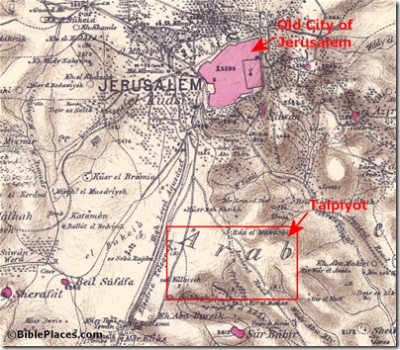I’ve compiled a short list of problems with the theory that Jesus’ family tomb has been located in Jerusalem.
- All historical evidence suggests that Jesus’ family lived in Galilee; no evidence suggests they lived in Jerusalem. They visited for holidays and Jesus was killed there on one of the holidays. Jesus’ brother James lived there several decades later. But there is no evidence that Jesus’ mother, father, or Mary Magdalene lived in Jerusalem.
- People were buried where they lived. There is no evidence that the bodies of Jesus’ family were transported from Galilee to Jerusalem.
- There is no historical evidence that Jesus received a secondary burial (in an ossuary or otherwise). All historical evidence suggests that he was buried once in a tomb near the crucifixion site.
- There were many people in ancient Jerusalem who had the names Jesus, Mary, Judah, and Joseph. We do not know how many people lived in Jerusalem, we do not know the precise date of these ossuaries (anywhere between 50 B.C. and 70 A.D.), we do not know the relationship of any of the people in the tomb. It is possible that the Judah inscribed on one ossuary is the son of the same Jesus who is inscribed on another ossuary. And it is possible that it was a different Jesus. It was common for ancient peoples to use names in the family when naming their children. Remember the wonder when Zechariah named his son John when no one else in their family had that name. One of Joseph’s sons was named after his father.
- Of the six inscribed ossuaries, only two give the name of the father (Jesus son of Joseph and Judah son of Jesus). The other individuals, including Joseph and Mary, could be related in any variety of ways to the other individuals. That Joseph is the brother of Jesus is only one possibility of many. That Mary is the wife of Jesus is only one possibility of many.
- Mary Magdalene is always identified as such in the Gospels (see Matt 27:56, 61; 28:1; Mark 15:40, 47; 16:1,9; Luke 8:2; 24:10; John 19:25; 20:1,18). It is interesting, then, that if this is her ossuary, that she would not be similarly identified. Instead she is allegedly identified with a name which only appears in a late (4th c.) source of dubious value.
- It is a non-issue that DNA analysis shows that the Jesus and Mary buried in this tomb were not from the same family. All women buried in a family tomb would be there as a result of marriage, so none of them would be related to the men, with the exception of children or an unmarried woman. It would be worthy of mention if the woman was related to the man.
- It is possible that the name Jesus has been misread and instead is the name “Hanun.” This may not be true, but it is mentioned by Stephen Pfann, one of the world’s best experts on Aramaic from the 1st century A.D.
- It is difficult to imagine a scenario in which followers of Jesus died for a man who they knew was buried over the next hill. When Peter declared to thousands of people in Jerusalem that “God raised [Jesus] from the dead,” I think someone would have raised their hand and mentioned the tomb. How the fact that Jesus actually had a son (and a sexual relationship with a woman) was kept a secret until recent times is also quite hard to fathom.
There may not be a “silver bullet” that makes this theory impossible, but the preponderance of the evidence makes it so unlikely as to require a tremendous amount of faith. If every assumption is accurate, then possibly this is the tomb of Jesus’ family. But if any one assumption is wrong, the whole thing falls apart.
There are many who are writing about this, and some are mentioned in today’s links below. See also the helpful analysis by Nathan Busenitz here.
